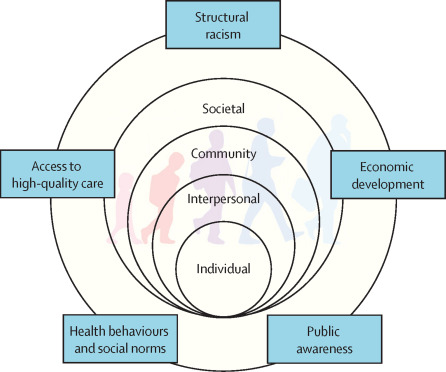Study Reveals Significant Racial and Ethnic Disparities in Type 2 Diabetes Post-Gestational Diabetes
New research led by epidemiologist Teresa Janevic, PhD, an Associate Professor of Epidemiology at Columbia University Mailman School of Public Health, has shed light on the profound racial and ethnic disparities in diabetes that follow gestational diabetes. These disparities, which have been largely overlooked in the realm of maternal health equity, are not only substantial but also call for immediate attention. The study, published in the journal Obstetrics & Gynecology, unveils a previously underexplored aspect of healthcare.
Dr. Janevic highlights the importance of this research:
“Very few studies have examined prenatal, social, or structural determinants of type 2 diabetes after GDM. Our study has several strengths. We are able to investigate potential paths to these differences since it is the largest cohort study on racial and ethnic disparities to date following GDM.
Gestational diabetes mellitus (GDM) is diagnosed in approximately 8 percent of pregnant individuals in the U.S., with a disproportionate impact on underserved communities of color.
The researchers utilized both birth and hospital records to establish the GDM cohort and identify relevant covariates, ensuring the study’s validity.
Tip: Please fill out this form to determine whether or not you or a friend are eligible for a CGM. Also, know about Managing Diabetes with CGM
By analyzing data from 2009 to 2011 New York City birth and hospital records and 2009 to 2017 New York City A1c Registry data, the researchers defined type 2 diabetes as two assessments of hemoglobin A1c that are 6.5 percent or greater. They then estimated associations between race, ethnicity, and 8-year type 2 diabetes incidence using data modeling techniques.
The results showed that Black people had a startling four-fold increased risk of type 2 diabetes following gestational diabetes mellitus, while Hispanic and South and Southeast Asian people had a three-fold increased risk. Asian individuals compared to White individuals.
Read Guide about Wegovy Dosage Guide: The Best Way For Weight Loss
The study included data from 22,338 patients with gestational diabetes, showing an overall 8-year type 2 diabetes incidence of 12 percent. This incidence was significantly higher among Black individuals (18.5 percent), South and Southeast Asian individuals (17 percent), Hispanic individuals (15 percent), and lower among White individuals (5.5 percent).
Of the individuals identified with GDM, 78 percent underwent an Hb A1c test during the follow-up period. Among Black and Hispanic individuals, this percentage was 82 percent, among Asian individuals, 78 percent, and among White individuals, 68 percent.
Furthermore, the research uncovered that social, structural, and clinical characteristics at the time of delivery explained 46 percent of the increased risk of postpartum diabetes among Hispanic individuals, 27 percent among Black individuals, and 14 percent among South/Southeast Asian individuals. This suggests an opportunity for targeted interventions to address lifelong cardio-metabolic inequities.
While common social determinants of health at the time of delivery, such as education and insurance status, had weaker associations with later diabetes in South Asian, Black, and Hispanic pregnant individuals compared to non-Hispanic White pregnant individuals, it underscores the need to investigate how structural racism influences postpartum cardiometabolic risk in these groups.
While racial and ethnic disparities in type 2 diabetes after GDM are significant, Dr. Janevic highlights the need for further research, saying, “The modest connections we observe of common social or structural measures and BMI in Black, Hispanic, and South and Southeast Asian individuals demonstrate the need for greater understanding of how structural racism influences postpartum cardiometabolic risk in these groups.”
The study underscores the urgency of addressing these disparities, revealing that within 8 years after experiencing gestational diabetes during pregnancy, an estimated 1 in 5 Black patients, 1 in 6 One in seven Hispanic patients, one in twenty non-Hispanic White patients, and patients from South or South Asia will develop type 2 diabetes.
Must Read: Connection Between Obesity-Related Metabolic Dysfunction and Endotrophin
Pregnancy healthcare represents a critical point of contact within the healthcare system for many individuals and offers an opportunity for early intervention to mitigate lifelong differences in type 2 diabetes.
“Our findings underscore the opportunity for GDM as an intervention point for life-course type 2 diabetes inequities and stress the importance of racial and ethnic disparities in GDM outcomes beyond the current pregnancy,” says Dr. Janevic in her call to action. We need additional efforts to combat structural racism and end inequalities through a variety of strategies, including clinical therapies aimed at specific individuals and changes at the governmental level.


